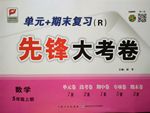题目内容
Once again, science supports what your grandmother told you: A good night's sleep helps your body fight a cold.
People who averaged fewer than seven hours of sleep per 1 in the weeks before being exposed to the cold virus were nearly three times 2 likely to get sick as those who 3 eight hours or more, a new study found.
Researchers used frequent telephone 4 to track the sleep 5 of more than 150 men and women aged 21 to 55 over the course of a few weeks. Then they 6 the subjects to the virus, quarantined them for five days and kept 7 of who got sick.
8 sleeping more, sleeping better also seemed to 9 the body fight illness: Patients who fared better on a measure 10 as 'sleep efficiency' - the percentage of time in bed that you're actually sleeping - were also 11 likely to get sick.
The results held 12 even after researchers 13 for variables such as body-mass index, age, sex, smoking and pre-existing antibodies to the 14 .
15 your grandmother, the researchers aren't exactly sure 16 sleeping better makes you less likely to 17 a cold. But they 18 take a stab at the answer: 'Sleep disturbance influences the regulation of proinflammatory cytokines(促炎细胞因子), histamines, and other symptom mediators that are released in response to infection.' In plain English, maybe tossing and turning when you're 19 with the cold virus 20 to the symptoms that define a cold.
The researchers were based at Carnegie Mellon, the University of Pittsburgh and the University of Virginia, and the study was funded by the National Institutes of Health.
( ) 1. A. day B. night C. week D. month
( ) 2. A. more B. as C. less D. same
( ) 3. A. occurred B. worked C. averaged D. longed
( ) 4. A. interviews B. reports C. announcements D. demands
( ) 5. A. hobbies B. quality C. progress D. habits
( ) 6. A. exposed B. placed C. protected D. prayed
( ) 7. A. touch B. check C. track D. reward
( ) 8. A. Except B. Besides C. Within D. Through
( ) 9. A. benefit B. guard C. help D. assist
( ) 10. A. known B. acted C. appointed D. classified
( ) 11. A. more B. less C. far D. totally
( ) 12. A. ideal B. false C. actual D. true
( ) 13. A. adopted B. adjusted C. enlarged D. employed
( ) 14. A. bodies B. cells C. virus D. medicines
( ) 15. A. Like B. As C. Against D. By
( ) 16. A. What B. When C. Where D. Why
( ) 17. A. develop B. form C. fight D. prevent
( ) 18. A. did B. often C. do D. never
( ) 19. A. infected B. surrounded C. limited D. attached
( ) 20. A. pulls B. promotes C. speeds D. contributes
1-20 BBCAD ACBCA BDBCA DACAD
解析:
本文说明了一项科学调查又一次证实了老祖母们的说法:一夜好睡眠,感冒挡在门外面。完成本完形填空时,我们应把生活中睡眠和抵抗感冒的实际和作者的思路逻辑联系起来。
1. B检测名词的含义辨析及在语言逻辑方面的准确应用。联系日常生活中的常识,经过分析,语意是:那些平均每晚睡七个小时还少的人比平均每晚睡八个小时还多的人在面临感冒病毒时多将近两倍的可能患上感冒。我们容易推理出此空应该填上表示晚上之意的名词,也即是B项,而其余ABD项依次分别所表达的意思是:白天,一周,一月,这些意思都不符合此处的上下文之间语言逻辑,故B项为准确答案。
2. B检测介词词组的含义的准确记忆与理解。由上一题的分析我们不难看出此处应该填上表示和…..一样之意的介词和下一个as一起构成固定短语as……as……,很明显其余ACD项无法这样,故B项为准确答案。
3. C 考查动词的含义辨析及在语言逻辑方面的准确应用。由上一题的分析我们不难看出此处应该填上表示平均之意的名词动,这四个词中只有C项有这样的意思。而其余ABD项依次分别所表达的意思是:发生,工作,盼望,很显然,这些意思在这儿都不符合此处的上下文之间语言逻辑,故B项为准确答案。
4. A检测名词的含义辨析及在语言逻辑方面的准确应用。我们容易推理出这一句的语境是:研究人员通过经常性的电话访问跟踪了150多名21-55岁年龄段的人(有男有女)几周内的睡眠习惯。看出此处应该填上表示采访之意的名词,BCD项依次分别所表达的意思是:报告,通知,要求,这些词语所表示的意思都和这儿的语言逻辑不相契合,只有A项有这样的意思,故A项最佳。
5. D 检测形容词的含义的准确记忆与理解。由上一题的分析我们不难看出此处应该填上表示习惯之意的名词,这四个词中只有D项有这样的意思,而其余ABC项依次分别所表达的意思是:嗜好,质量,进步,这些意思在这儿都不符合此处的上下文之间语言逻辑,故D项为准确答案。
6. A 检测动词的含义的准确记忆与理解。联系上下文的语境,经过分析,语意是:。然后让这些研究对象接触感冒病毒,隔离5天之后,看看哪些人患上了感冒。这里的接触就是让他们暴露于的意思,这四个词中只有A项有这样的意思,而其余BCD项依次分别所表达的意思是:放置,保护,恳求,这些意思都不符合此处的上下文之间语言逻辑,故A项为准确答案。
7. C 检测名词的含义辨析。由上一题的分析我们不难看出此处应该和keep一起构成短语表示看看,也就是跟踪之意,这四个词中只有C项有这样的用法,而其余ABD项依次分别所表达的意思是:联系,核对,报答,这些意思和keep搭配之后的意思都不符合此处的上下文之间语言逻辑,故C项为准确答案。
8. B检测介词的含义辨析及在语言逻辑方面的准确应用。联系上下文的语境,及日常生活中的常识,我们容易推理出这一句的语境是:除延长睡眠时间外,提高睡眠质量看起来也有助于人体抵抗疾病。我们不难看出此处应该填上表示除了…..之外还有…..之意的介词,ACD项依次分别所表达的意思是:除掉,在……之内,通过,这些意思很明显都不符合此处的上下文之间语言逻辑,故B项为准确答案。
9. C 考查动词的含义辨析及在语言逻辑方面的准确应用。由上一题的分析我们不难看出此处应该填上表示有助于之意的动词,也即是C项,而其余ABD项依次分别所表达的意思是:使……受益(其后不能跟复合宾语即是不能用作benefit sb./sth. do sth.),保卫(其后往往跟sb./sth.from/against sth.),帮助(其后也不能跟复合宾语即是不能用作assist sb./sth. do sth.),故C项最佳。
10. A考查动词过去分词的含义辨析及在语言逻辑方面的准确应用。我们容易推理出这一句的语境是:那些在人们所知的名叫“睡眠效率”评测中表现较好的病人患病的几率也较低。我们不难看出此处应该填上表示人们所知的之意的词,这四个词中只有A项有这样的意思,而其余BCD项依次分别所表达的意思是:扮演,指定,分类,虽然都和as搭配,但是这些意思很明显都不符合此处的上下文之间语言逻辑,故A项为准确答案。
11. B 检测形容词比较级的含义的准确记忆与理解。由上一题的分析我们不难看出此处应该填上表示较小的之意的形容词比较级,也即是B项,而其余ACD项依次分别所表达的意思是:较多的,远的,总共的,非常显然,这些意思在这儿都不符合此处的上下文之间语言逻辑和语境语意,故B项为准确答案。
12. D检测形容词的含义的准确记忆与理解。经过分析,语意是:即便是在研究人员将身高体重指数(BMI)、年龄、性别、是否吸烟以及是否早有病毒抗体等因素考虑进来进行调整之后,这个结论仍然真实可靠。我们容易推理出这一空应该填上表示真实的之意的形容词,ABC项依次分别所表达的意思是:理想的,假的,事实上的,很明显放在这儿都不是这样的意思,不能使句意通顺,只有D项有真实的意思,故D项最佳。
13. B 检测动词的含义的准确记忆与理解应用。由上一题的分析我们不难看出此处应该填上表示进行调整之意的动词,这四个词中只有B项(调整,调节)有这样的意思,而其余ACD项依次分别所表达的意思是:收养,扩大,雇佣,非常清楚,这些意思在都能是语意顺畅,不符合此处的上下文之间语言逻辑,故B项为准确答案。
14. C 检测名词的含义辨析及在语言逻辑方面的准确应用。联系上下文的语境,及日常生活中的常识,由上一题的分析我们不难看出此处应该填上表示病毒之意的名词,也即是C项,而ABD项这些词语所表示的意思身体,细胞,药品等等都和这儿的语言逻辑不相契合,故我们选择C项为最佳答案。
15. A 检测介词的含义的准确记忆与理解应用。联系上下文的语境,我们容易推理出这一句的语境是:和老祖母们一样,研究人员也不能肯定为什么睡得好能降低患感冒的几率。经过分析,我们不难确定此处应该填上表示像……一样之意的介词,只有A项有这样的意思,能使句意通顺,而其余BCD项依次分别所表达的意思是:作为,反对,经过,很明显放在这儿都不符合上下文之间语言逻辑,故我们选择A项为最佳答案。
16. D 检测连词的含义辨析及在语言逻辑方面在引导宾语从句时的准确应用。由上一题的分析我们不难看出此处应该填上表示为什么之意的词来引导宾语从句,很明显ABC项依次分别所表达的意思:什么,何时,何地,放在这儿都不能使句意通顺,故D项为准确答案。
17. A 检测动词的含义的准确记忆与理解应用。由第15题的分析我们不难看出此处应该填上表示患上之意的动词,这四个词中只有A项有这样的意思,而其余BCD项依次分别所表达的意思是:形成,斗争,预防,这些意思在这儿都不符合此处的上下文之间语言逻辑,故B项为准确答案。
18. C考查动词do用来表示强调的应用。经过分析,语意是:不过他们的确猜中了原因是:睡眠不良会影响人体对促炎细胞因子、组胺和其他为应对病毒感染而释放的症状调节因子的调节。这四个词中只有C项有的确这样的意思,而其余ABD项没有这的用法,故我们选择C项为最佳答案。
19. A 检测形容词的含义的准确记忆与理解。联系上下文的语境,及日常生活中的常识,我们容易推理出这一句的语境是:说白了,就是染上感冒病毒后睡觉时的辗转反侧可能是造成感冒症状的原因之一。经过分析,我们不难看出此处应该填上表示感染之意的动词,这四个词中只有A项有这样的意思,而其余ABD项依次分别所表达的意思是:包围,限制,附加,很明显放在这儿都不能使句意通顺,故A项最佳。
20. D 考查动词的含义辨析及在语言逻辑方面的准确应用。由上一题的分析我们不难看出此处应该填上表示造成之意的动词,ABC项依次分别所表达的意思是:拉,推广,加快速度,和这儿的语言逻辑不相契合,而D项和to搭配之后的意思就是造成,句意通顺,故D项最佳。

 黄冈课堂作业本系列答案
黄冈课堂作业本系列答案 单元加期末复习先锋大考卷系列答案
单元加期末复习先锋大考卷系列答案New York has taken the title of the world’s top fashion capital from Milan. The annual survey suggest that the top five fashion cities are facing competition from Asia and Australia. New York had been the top fashion city for five years, but Milan took the title in 2009. The survey was made by the Global Language Monitor, a US based organization. It tracks the frequency(频率) of words and phrases in the media, on the Internet and throughout the blog. With the US economy recovering, New York once again took the top title. Hong Kong took second place. It was followed by London, Paris and Los Angeles. The other top 10 cities were Milan, Sydney, Miami, Barcelona and Madrid.
“Because of the new economic situation, the global fashion centers have also changed a lot, ”said Bekka Payack. the Manhattan-based fashion reporter for the Global Language Monitor. “The new list shows that global fashion centers will change now and then. Compared with the traditional fashion cities, some new ones are performing better and better. ”She said that perhaps this is new trend, and it is the first sign that the traditional top five fashion cities——New York, Paris, London, Milan, and Rome——do not control global fashion any more.
The biggest changes in the list are Hong Kong, Madrid and Melbourne. The Group said that the top newcomers to the list include Amsterdam at number 17, Cape Town at 23, Johannesburg at 25 and Vienna at 27.
The following are the 10 top fashion cities of 2010 and the changes from 2009.
1. New York(up 1) 2. Hong Kong(up 5)
3. London(up 2) 4. Paris(down 1)
5. Los Angeles(up 1) 6. Milan(down 5)
7. Sydney(up 2) 8. Miami(up 5)
9. Barcelona(up 5) 10. Madrid(up 11)
1.New York has regained the title of the world’s top fashion capital mainly because __________.
|
A.the US economy has been recovering |
|
B.Milan faced competition from other cities |
|
C.few big cities took part in the competition |
|
D.the survey was made by an American organization |
2.Compared with the 2009 list, which of the following has the greatest change?
|
A.Hong Kong |
B.Milan |
C.Madrid |
D.Barcelona |
3.We can infer from the text that __________.
|
A.New York has lost the top title several times |
|
B.all the traditional fashion cities are in the 2010 list |
|
C.economic situations influence global fashion centers |
|
D.new fashion cities have performed better than traditional ones |
4.The text is probably taken from a __________.
|
A.science report |
B.fashion magazine |
|
C.geography textbook |
D.history book |